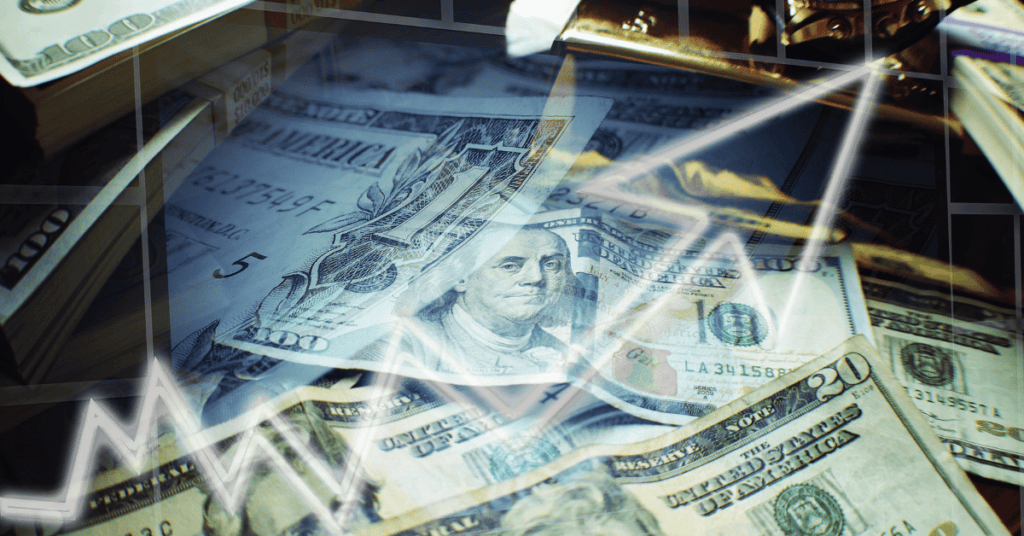Get Expert Financing
- Matched with investor-friendly lenders
- Fast pre-approvals-no W2s required
- Financing options fro rentals, BRRRR, STRs
- Scale your portfolio with confidence
When we talk to homeowners, they always ask the million-dollar question: How long should I wait to make the cost to refinance a mortgage worthwhile?
A 2% rate drop seems like a no-brainer, but what about a 1% drop? Perhaps even a 0.5% or .25% drop, as we’re more accustomed to seeing in the current rate climate?
The answer isn’t as straightforward as you might think—it’s not one-size-fits-all. Your individual circumstances play a significant role, and we’ll dissect that in this guide.
Whether you’re grappling with a $100,000 or $1,000,000 mortgage, our step-by-step approach will provide the insights you need.
Let’s tackle the elephant in the room: What rate drop should prompt you to refinance your mortgage? Unfortunately, no matter what anyone online tries to tell you, there’s no universal answer.
Here’s why:
To illustrate this point, let’s delve into two examples:
The larger your loan, the more these fixed costs dilute, making even a small rate drop potentially beneficial.
To help you visualize the savings-cost ratio, you must calculate further; we’ve put together these charts to show you some examples of how it might work out.
| Loan amount | Closing costs | 0.5% drop payment reduction | 1% drop payment reduction | 2% drop payment reduction |
| $100,000 | $4,000 | $41 | $81 | $158 |
| $250,000 | $4,500 | $103 | $203 | $396 |
| $375,000 | $5,000 | $154 | $305 | $594 |
| $500,000 | $7,000 | $205 | $406 | $792 |
| $750,000 | $10,000 | $308 | $609 | $1,188 |
| $1,000,000 | $12,000 | $411 | $812 | $1,583 |
Now, if we look at these same examples in terms of the years it will take to recoup the refinance costs—otherwise known as the break-even point—it looks like this:
| Loan amount | Closing costs* | 0.5% drop break-even years | 1% drop break-even years | 2% drop break-even years |
| $100,000 | $4,000 | 8.1 | 4.1 | 2.1 |
| $250,000 | $4,500 | 3.7 | 1.8 | 0.9 |
| $375,000 | $5,000 | 2.7 | 1.4 | 0.7 |
| $500,000 | $7,000 | 2.8 | 1.4 | 0.7 |
| $750,000 | $10,000 | 2.7 | 1.4 | 0.7 |
| $1,000,000 | $12,000 | 2.4 | 1.2 | 0.6 |
*All closing costs mentioned are for example purposes only. Your costs could be higher or lower.
As these tables show, the bigger your current loan, the more it makes financial sense to refinance—even with a fractional drop in interest rates.
If the amount you’ve paid for your home is close to the national median—currently hovering around the $435,000 level—refinancing your mortgage means you could hit the break-even point in less than three years with only a half-a percentage drop in rates.
At the national average home price, it would take just three years to break even on refinance costs with a 0.50% rate reduction.
After that point, it’s all savings.
Plus, the higher your mortgage amount, the less time you have to wait—and the more savings you’ll have going forward.
And it may not be merely a drop in interest rates that motivates you to refinance your mortgage. As we’ll show you next, there are several other reasons you might consider refinancing your mortgage beyond the potential savings.
Start saving with a refinance.Besides a drop in interest rates, there are various compelling reasons to consider refinancing a mortgage.
Let’s explore some common motivations behind this financial decision.
Refinancing allows you to change your loan terms, offering flexibility and potential benefits.
For instance, you can transition from a 30-year mortgage to a 15-year one, accelerating your mortgage payoff and achieving financial goals sooner. You could also change a 15-year to a 30-year to reduce your monthly payment.
Refinancing offers a practical solution for consolidating debt.
By tapping into your home’s equity, you can pay off high-interest debts, such as credit cards or personal loans, potentially resulting in lower payments overall.
By refinancing, you have the opportunity to access your home’s equity. This means you can extract cash from your home’s equity and allocate it towards bills, renovations, or whatever you choose.
This financial strategy enables you to leverage the value of your property for various purposes, enhancing your financial flexibility and goals.
Accelerate your mortgage repayment. This will reduce the amount you spend on interest payments and allow you to save money over the entire loan duration.
Refinancing your home can be a smart move to eliminate the requirement of private mortgage insurance once you’ve accumulated sufficient equity. It’s a strategic way to optimize your finances and enhance long-term savings.
By refinancing, you can switch your loan type, allowing for greater flexibility and improved financial stability.
For instance, you can transition from an adjustable-rate mortgage (ARM) to a fixed-rate mortgage, giving you the confidence of a consistent, reliable interest rate.
Refinancing isn’t a choice that can apply to every homeowner and mortgage holder. It’s a nuanced decision influenced by:
Remember, while a 2% rate drop is often touted as the ‘golden rule’ for refinancing, it does not apply to everyone.
Assess your circumstances, run the numbers, and make an informed decision. Refinancing can be a powerful tool, but only when wielded correctly.
Get your refinance quote here.Our advice is based on experience in the mortgage industry and we are dedicated to helping you achieve your goal of owning a home. We may receive compensation from partner banks when you view mortgage rates listed on our website.

